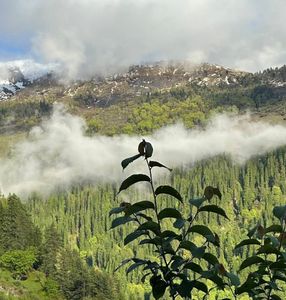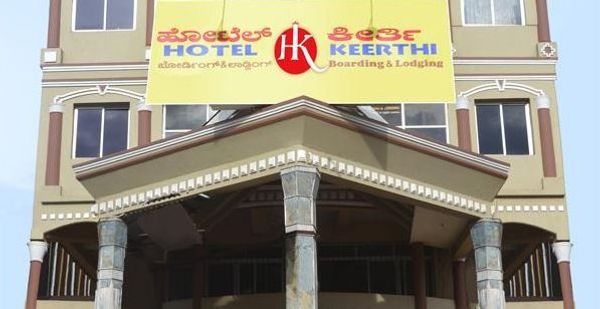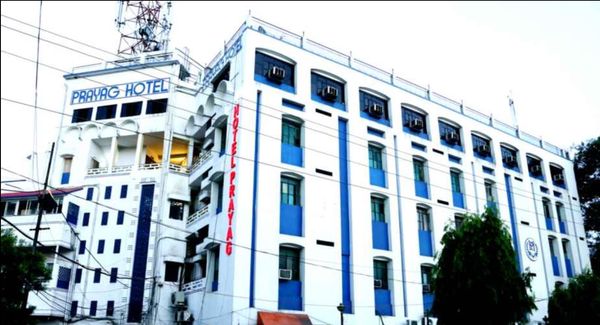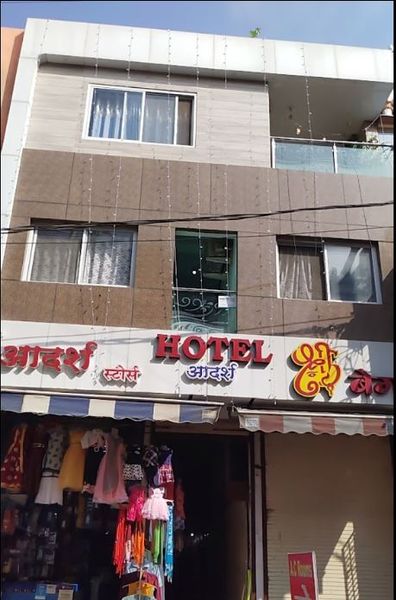Flora and Fauna of Hampta Pass During Monsoon
 Ankit Rawat
21 Jul, 2025
9 mins read
60
Ankit Rawat
21 Jul, 2025
9 mins read
60

Hampta Pass is a beautiful mountain pass in the Indian state of Himachal Pradesh. It lies between the valleys of Kullu and Lahaul. Every year many trekkers visit Hampta Pass to enjoy its scenic views and natural beauty. During the monsoon season this region comes alive with lush greenery colorful flowers and rare animals. The mix of plants and wildlife makes Hampta Pass a paradise for nature lovers.
In this article we will explore the flora and fauna of Hampta Pass during the monsoon season. You will learn about the types of plants that grow here and the animals that live in this region.
Where is Hampta Pass Located
Hampta Pass is located in the Pir Panjal range of the Himalayas. It is at an altitude of around 14000 feet. The pass connects the green valley of Kullu with the barren valley of Lahaul. The nearest town is Manali which is about 30 kilometers away.
During the monsoon season from July to September the Hampta Pass trek becomes especially beautiful as the region receives good rainfall. This helps many plants and flowers to grow. The rivers and waterfalls are full and the air feels fresh and cool
Climate of Hampta Pass in Monsoon
The monsoon season brings medium to heavy rainfall in Hampta Pass. The temperature stays between 5 to 15 degrees Celsius. It is cool and sometimes cold at night. Due to rain the paths may become slippery and foggy. But it is also the time when the area becomes green and colorful.
Trekkers who visit during monsoon get to see many wildflowers insects and birds. The region looks very different from other seasons.
Flora of Hampta Pass in Monsoon
Flora means the plant life found in a place. Hampta Pass has rich and diverse plant life. During the monsoon season the area is full of green meadows tall grasses and blooming flowers.
Alpine Flowers
During monsoon many alpine flowers bloom in Hampta Pass. These flowers grow at high altitudes and survive in cold and wet weather. Some of the common flowers are blue poppies purple asters and yellow wild roses. These flowers cover the ground like a carpet and add bright colors to the scenery.
Rhododendrons
Rhododendrons are common in this region. These are flowering shrubs with red pink or white flowers. They grow in the lower parts of the trek and are often seen near forests.
Birch and Oak Trees
In the forested areas of Hampta Pass you will find birch and oak trees. These trees grow well in the moist soil and provide shelter to birds and insects. Their green leaves shine after the rain giving the forest a fresh look.
Medicinal Plants
Some rare herbs and plants with medicinal value also grow in this region. Local people sometimes collect them for natural remedies. One such plant is the Himalayan thyme which has a strong smell and is used in herbal teas.
Fauna of Hampta Pass in Monsoon
Fauna means the animal life found in a place. Hampta Pass is home to many birds insects and animals. During monsoon many of them come out in the open as the food becomes easy to find.
Himalayan Birds
Hampta Pass is a great place for bird watchers. Many types of birds can be seen here especially after rain. Some of the birds found here are the Himalayan Monal snow pigeon white capped redstart and yellow billed blue magpie. These birds add beauty to the landscape with their bright feathers and sweet calls.
Mountain Goats and Sheep
Animals like the Himalayan tahr and bharal or blue sheep are found in the higher regions of the trek. They graze on the mountain slopes and are often seen in groups. They have thick fur to protect themselves from the cold.
Marmots
Marmots are large squirrel like animals that live in burrows. During monsoon they are active and can be seen standing on rocks or near their holes. They are friendly and sometimes whistle loudly when they sense danger.
Insects and Butterflies
With flowers in full bloom many butterflies and bees are seen around. They help in pollination and add more color to the trail. Some rare butterflies with bright wings are only found during this time.
Occasional Sightings of Larger Animals
Though rare there is a chance to see animals like the snow leopard or Himalayan brown bear in far off regions. They usually stay away from human paths but their signs may be seen like footprints or scratches on trees.
Importance of Flora and Fauna in Hampta Pass
The plants and animals of Hampta Pass play an important role in keeping the environment balanced. Plants stop soil erosion and provide food for animals. Animals help in seed spreading and keep the food chain active.
Monsoon is the time when nature grows and breathes freely. But it is also a time when this delicate environment needs care. Trekkers and visitors should respect the plants and animals. They should not pluck flowers or scare animals. It is important to leave no waste behind.
Tips for Trekkers During Monsoon
If you are planning to trek to Hampta Pass during the monsoon season here are some tips to enjoy the flora and fauna safely
- Wear waterproof shoes and carry rain gear
- Walk carefully on wet and muddy trails
- Do not touch or eat unknown plants
- Keep a safe distance from animals
- Use binoculars to watch birds
- Carry a small field guide for plants and birds
- Do not leave plastic or food waste in nature
Conclusion
Hampta Pass is a magical place during the monsoon season. Its forests meadows rivers and skies come alive with colors and sounds. The variety of plants and animals found here is a gift of nature. From tiny flowers to wild goats from buzzing bees to rare birds each part of this region has a story.
If you are someone who loves nature and wants to experience the beauty of the Himalayas then a monsoon trek to Hampta Pass is a great choice. Just remember to be a responsible traveler and help protect this natural treasure for the future.
Written By:
Ankit Rawat



Hotels at your convenience
Now choose your stay according to your preference. From finding a place for your dream destination or a mere weekend getaway to business accommodations or brief stay, we have got you covered. Explore hotels as per your mood.


